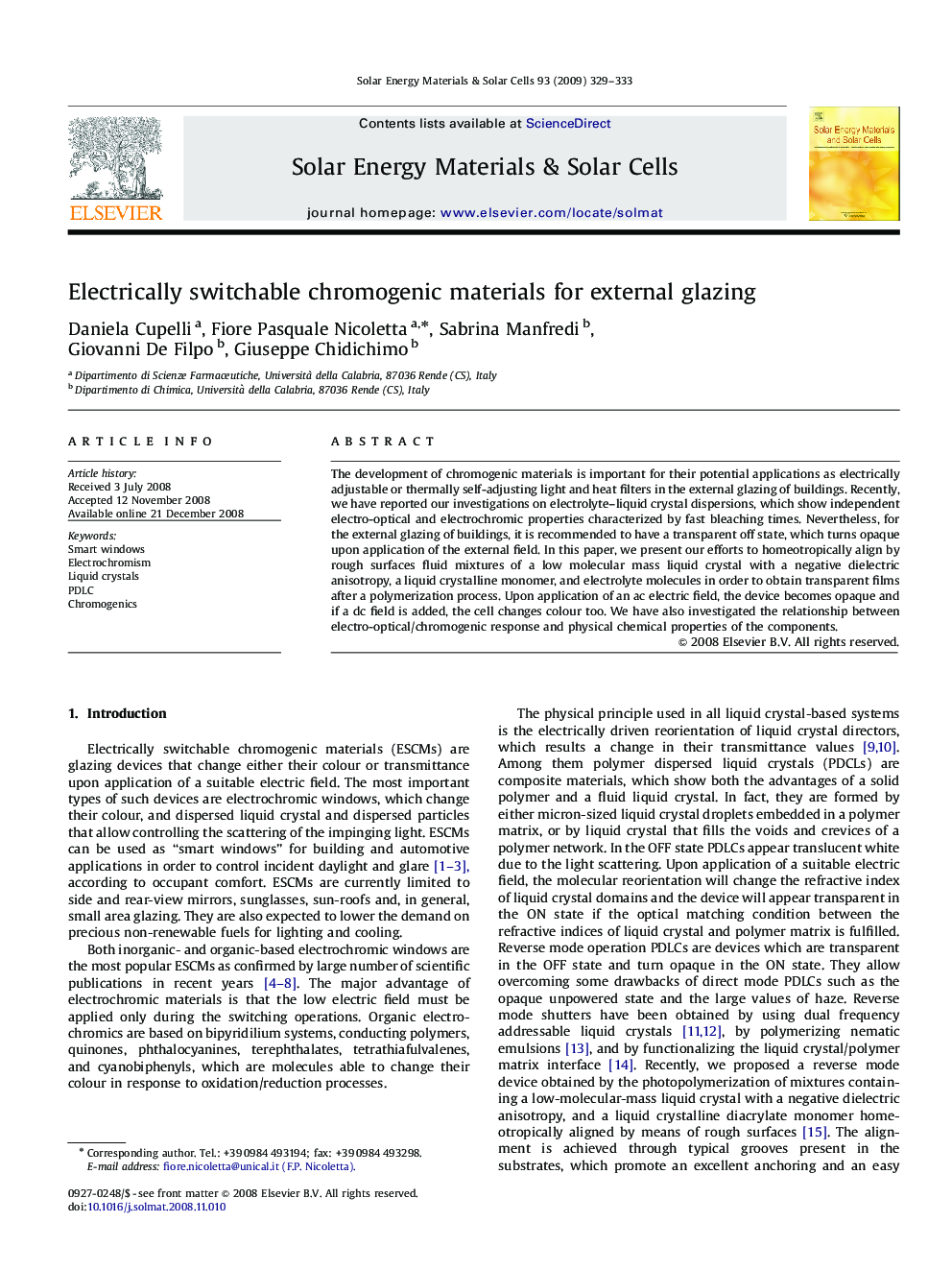| Article ID | Journal | Published Year | Pages | File Type |
|---|---|---|---|---|
| 80499 | Solar Energy Materials and Solar Cells | 2009 | 5 Pages |
The development of chromogenic materials is important for their potential applications as electrically adjustable or thermally self-adjusting light and heat filters in the external glazing of buildings. Recently, we have reported our investigations on electrolyte–liquid crystal dispersions, which show independent electro-optical and electrochromic properties characterized by fast bleaching times. Nevertheless, for the external glazing of buildings, it is recommended to have a transparent off state, which turns opaque upon application of the external field. In this paper, we present our efforts to homeotropically align by rough surfaces fluid mixtures of a low molecular mass liquid crystal with a negative dielectric anisotropy, a liquid crystalline monomer, and electrolyte molecules in order to obtain transparent films after a polymerization process. Upon application of an ac electric field, the device becomes opaque and if a dc field is added, the cell changes colour too. We have also investigated the relationship between electro-optical/chromogenic response and physical chemical properties of the components.
